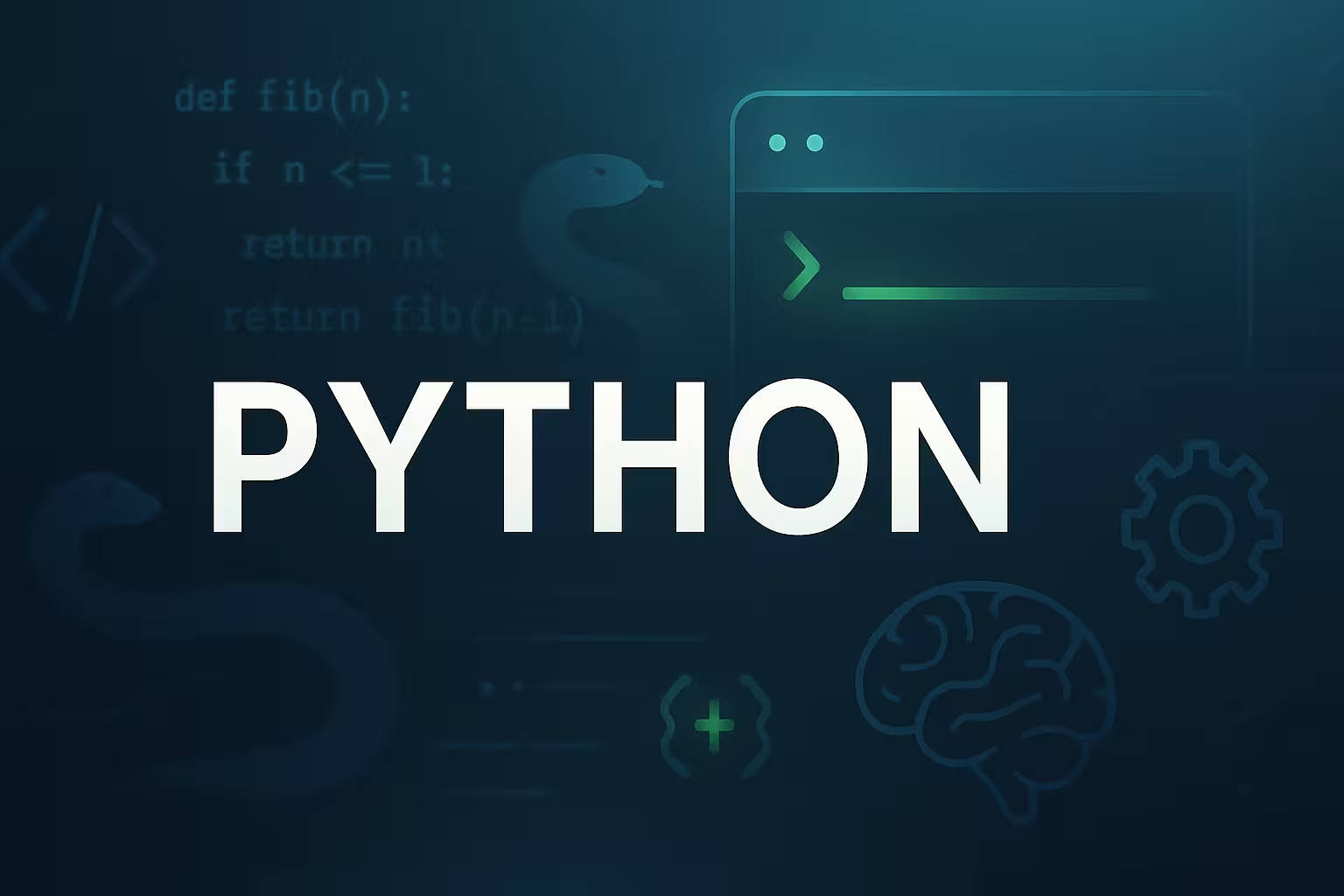
Table of Contents
What is Python?
Python is a high-level, interpreted programming language known for its simple syntax, readability, and versatility. It was created by Guido van Rossum and first released in 1991. Python emphasizes code readability and allows developers to express concepts in fewer lines of code than would be possible in languages such as C++ or Java.
Python supports multiple programming paradigms, including procedural, object-oriented, and functional programming. Due to its clear syntax and supportive community, Python has become one of the most popular programming languages worldwide. As of 2025, Python consistently ranks at the top of global programming language indexes, such as TIOBE and Stack Overflow Developer Survey.
Python is dynamically typed and garbage-collected. It runs on multiple platforms including Windows, macOS, Linux, and more. Its syntax allows developers to focus on solving problems rather than dealing with the complexity of the language.
Core Features of Python
- Easy to Learn and Use: Python is beginner-friendly with a simple syntax similar to the English language.
- Interpreted Language: No need to compile code; it is executed line-by-line, which makes debugging easier.
- Dynamically Typed: You don’t need to declare variable types; Python determines the type at runtime.
- Extensive Libraries: Python has a vast collection of standard and third-party libraries that simplify development.
- Portability: Python code can run on different platforms with little or no modification.
- Open Source: Freely available with a strong community contributing to its development.
The Philosophy of Python
Python follows a design philosophy known as “The Zen of Python,” authored by Tim Peters. These are guiding principles for writing computer programs in Python:
import thisSome key principles include:
- Beautiful is better than ugly.
- Explicit is better than implicit.
- Simple is better than complex.
- Readability counts.
A Brief History of Python
- Late 1980s: Guido van Rossum starts developing Python as a hobby project.
- 1991: Python 0.9.0 is released. It includes classes, functions, exception handling, and core data types.
- 2000: Python 2.0 introduces features like list comprehensions and garbage collection.
- 2008: Python 3.0 is released with improved Unicode support and cleaner syntax, but it is not backward compatible.
- Today: Python 3.x is the standard and receives regular updates, with the community moving away from Python 2.x completely.
Why Learn Python?
Python is the go-to language for many different types of developers:
1. Simplicity and Readability
Python’s syntax is intuitive and emphasizes readability. Unlike many other languages that use braces and semicolons, Python uses indentation to define blocks of code. This visual structure makes Python code easier to read and maintain.
2. Versatility
You can use Python for:
- Web Development (e.g., Flask, Django)
- Data Science and Machine Learning (e.g., Pandas, NumPy, scikit-learn, TensorFlow)
- Automation and Scripting
- Game Development (e.g., Pygame)
- Desktop Applications (e.g., Tkinter, PyQt)
- Internet of Things (IoT)
- Cybersecurity and Penetration Testing
3. Career Opportunities
Python is in high demand across industries. Whether you are looking to be a web developer, data analyst, AI engineer, or automation tester, knowing Python increases your job prospects.
4. Community Support
Python has one of the largest programming communities. Whether you’re a beginner or an expert, help is readily available through documentation, forums, and thousands of tutorials.
Who Uses Python?
Python is used by a wide range of professionals:
- Software Engineers: For building web apps and automation tools.
- Data Scientists: For analyzing and visualizing data.
- Machine Learning Engineers: For training models using libraries like TensorFlow and PyTorch.
- Researchers and Academics: For simulations, experiments, and data modeling.
- Network Engineers: For scripting and network automation.
- Finance Professionals: For algorithmic trading and financial modeling.
Organizations Using Python
Some of the world’s largest and most influential organizations use Python:
- Google: For many internal systems and automation.
- Netflix: For data analytics and recommendations.
- NASA: For scientific computing and automation.
- Instagram: The backend is powered by Django (a Python framework).
- Spotify: For data analysis and backend services.
Python vs Other Programming Languages
| Feature | Python | Java | C++ | JavaScript |
|---|---|---|---|---|
| Syntax Simplicity | Very simple | Verbose | Complex | Moderate |
| Execution | Interpreted | Compiled | Compiled | Interpreted |
| Use Cases | General purpose | Enterprise, Android | Systems, Games | Web Development |
| Learning Curve | Easy | Moderate | Steep | Easy to Moderate |
| Community Support | Excellent | Excellent | Very Good | Excellent |
Example: Python vs Java
Python:
print("Hello, World!")
Java:
public class HelloWorld {
public static void main(String[] args) {
System.out.println("Hello, World!");
}
}
Python is clearly more concise and beginner-friendly.
Common Use Cases with Real Examples
- Web Scraping: Use
BeautifulSoupto extract data from websites. - Data Analysis: Use
pandasto load, clean, and analyze datasets. - Machine Learning: Use
scikit-learnto build predictive models. - GUI Apps: Use
Tkinterto develop simple desktop tools. - Scripting: Write Python scripts to automate file operations or batch processes.
Python’s Role in Emerging Technologies
Python is a major player in modern technological innovations:
- AI and Deep Learning: Libraries like TensorFlow and Keras allow building deep neural networks.
- Big Data: Python integrates with Hadoop and Spark for large-scale data processing.
- Cybersecurity: Security researchers use Python for writing custom tools and exploits.
- Blockchain: Developers prototype blockchain applications using Python.
Summary
Python is more than just a programming language—it is a gateway into the world of software development, automation, data analysis, and artificial intelligence. Whether you’re a complete beginner or transitioning from another language, Python’s simplicity, power, and versatility make it the best language to learn in today’s tech-driven world.
In the next chapter, we will walk through how to install Python on your system and configure your development environment step-by-step, so you can start writing code right away.
